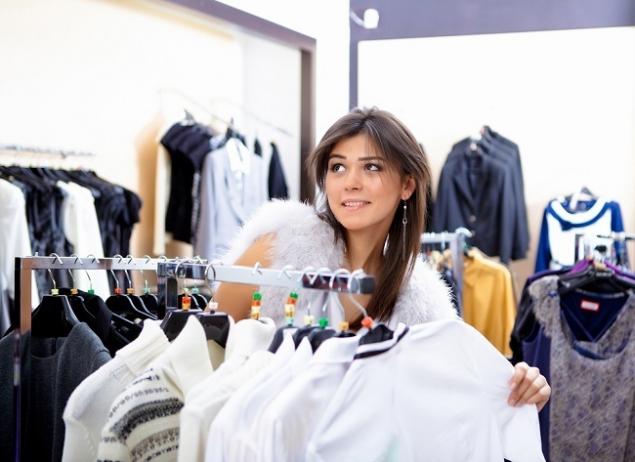463
Why generation Z buys as well as their parents
Teenagers become more rational approach to shopping. They are more like their parents. Representatives of the generation Z grow up and start to think twice before to buy something. They don't sweep clothes from the shelves and not keen to take their place in line at the cash register.
This does not mean that the crisis has hit their wallets. Young people have redefined the buying process and, like their parents, rationally control your spending. Now brands and stores need to adapt to the new tastes of young people, promising them extra headache. Look at it through the eyes of a typical teenager.

15-year-old Julia Pugliese — a bright representative of modern youth. She likes to look good, and she's carefully watching their wardrobe.
During your shopping tour with friends ahead of school Julie left one of his favorite stores — Nike — empty-handed. The issue Matures by itself — why? "I buy clothes during the sales. It's silly to buy a pair of pants for $ 60 now," says the young Shopaholic, already zasmatrivayas in the window of a nearby store Marshalls with a huge sign "discounts".
This case is proof that when shopping teenagers careful and thoughtful in their purchases. This habit was passed on to them from their parents. Teenagers even go on small cunning — old clothes, they mix with newly acquired to create a new fashion image. The number of adolescents applying this method has increased from 26% in 2011 to 39% in 2015. These data are presented in the study by Deloitte LLP.
Most often the things they really need, rarely can buy at their favorite outlets. Therefore, teenagers prefer to buy unnecessary and out of the closet old good friend. The money saved is usually spent during the year on other needs. So what are the real reasons for such a rapid change in buying behavior of adolescents?
The root of the problem the Changing attitudes of generation Z has to do with how the parents were preparing them for school since 2008, when the pre-school season, retailers started to make sales and introduced the discounts to attract more customers in times of crisis. This increased the number of buyers but at the same time "corrupting" their regular discounts.
Sales season is from July to September, usually the second largest of the year, after the holidays, and now stands at 24.9% in total annual turnover of retail chains. But in 2003 this indicator was at the level of 25.9 per cent, the report says, The Retail Economist. Retailers have stalled — usual sales did not bring the desired results.
"Buyers by their behavior misleading retailers that shopping season "back to school" is no longer as important as before," said Alison Paul, Deloitte.
If early discounts helped draw buyers, now they played with retailers a cruel joke. Then the kids grew up and the example mom and dad waiting for discounts. Retailers wonder — and if the former returns no, whether it is worth to take the risk? And how to be in this situation? Now we need to focus on the needs of the new generation and understand what they really need.
Generation Z is not in a hurry for shopping in order to understand the causes of changes in purchasing behavior of youth, "the watch" for a few teenagers — 14-year-old cousin Julia Arianna schaden and her two friends — 17-year-old Isabella Chinato and 15-year-old Sophia Harrison.
The girls started back to school a few weeks ago, but they're still not in a hurry to purchase everything you need. For example, the same jeans can be bought after the beginning of the study, closer to late autumn. And saved half of the budget of 400 $ can be spent on something else.
In the end, Cimato did not buy anything, and Harrison — only a few t-shirts. "The truth is, there is nothing. Usually I shop throughout the year," explains Harrison. In addition, they are still waiting for really big sales. Despite the fact that schaden liked jumpsuit for $ 58, she never bought. "I'll buy it on sale. My mom doesn't buy anything until this thing will not discounts," says Harrison friend.
Because of this, retailers Macy's and J. C. Penney launches a special promotion to schools throughout September. They also diluted their range more appropriate for the season clothing — jackets, backpacks and basic things.
Teenagers are more advanced customers it is also Noteworthy that in the US is now rare to see teenagers making purchases at the shopping centers in front of the school. At this time they prefer to track fashion trends on the Internet and follow the hashtag on social networks. They carefully estimate your image in mind and then go hunting. According to a survey by Google, the popularity of the query "clothes for school" in the last few years has increased significantly. And in July 2015 reached growth of 76%.
For example, Chinato most often searched for things denim Instagram: "I know that I really need and what I'm looking for," she notes. And it causes the worst fears of retailers. They understand that teenagers will purposefully go shopping for a certain thing, even without going into points of their brands. Thus shopping online is also actively monitoring new trends in social networks.
Macy's calculates trends and preferences of adolescents in key hashtags. It would seem that the most that neither is a breakthrough in the retail trade network monitor customers on social media and give them what they need. But there it was. And this method can quickly lose relevance.
There is one pitfall in this story — the teenagers want to look unique. They don't want to dress up a blueprint and be like twins. They create its image, bringing together everything seen in the network. And it promises new challenges for retailers. They can't predict what will appeal to their young buyers. It only remains to continually increase the selection of clothing to get right in the bull's eye. "The buyers are the centre of everything we do," concludes the President of Hollister Fran Galovic. Now you need to learn all over again around this center revolve.published
Author: Ann D Innocenzio
Translation of Isabella Kozakovoj P. S. And remember, only by changing their consumption — together we change the world! ©
Join us in Facebook and Vkontakte, and we're Classmates
Source: newretail.ru/livestyle/yabloko_ot_yabloni_pochemu_pokolenie_z_pokupaet_tak_zhe_kak_ikh_roditeli5715/
This does not mean that the crisis has hit their wallets. Young people have redefined the buying process and, like their parents, rationally control your spending. Now brands and stores need to adapt to the new tastes of young people, promising them extra headache. Look at it through the eyes of a typical teenager.

15-year-old Julia Pugliese — a bright representative of modern youth. She likes to look good, and she's carefully watching their wardrobe.
During your shopping tour with friends ahead of school Julie left one of his favorite stores — Nike — empty-handed. The issue Matures by itself — why? "I buy clothes during the sales. It's silly to buy a pair of pants for $ 60 now," says the young Shopaholic, already zasmatrivayas in the window of a nearby store Marshalls with a huge sign "discounts".
This case is proof that when shopping teenagers careful and thoughtful in their purchases. This habit was passed on to them from their parents. Teenagers even go on small cunning — old clothes, they mix with newly acquired to create a new fashion image. The number of adolescents applying this method has increased from 26% in 2011 to 39% in 2015. These data are presented in the study by Deloitte LLP.
Most often the things they really need, rarely can buy at their favorite outlets. Therefore, teenagers prefer to buy unnecessary and out of the closet old good friend. The money saved is usually spent during the year on other needs. So what are the real reasons for such a rapid change in buying behavior of adolescents?
The root of the problem the Changing attitudes of generation Z has to do with how the parents were preparing them for school since 2008, when the pre-school season, retailers started to make sales and introduced the discounts to attract more customers in times of crisis. This increased the number of buyers but at the same time "corrupting" their regular discounts.
Sales season is from July to September, usually the second largest of the year, after the holidays, and now stands at 24.9% in total annual turnover of retail chains. But in 2003 this indicator was at the level of 25.9 per cent, the report says, The Retail Economist. Retailers have stalled — usual sales did not bring the desired results.
"Buyers by their behavior misleading retailers that shopping season "back to school" is no longer as important as before," said Alison Paul, Deloitte.
If early discounts helped draw buyers, now they played with retailers a cruel joke. Then the kids grew up and the example mom and dad waiting for discounts. Retailers wonder — and if the former returns no, whether it is worth to take the risk? And how to be in this situation? Now we need to focus on the needs of the new generation and understand what they really need.
Generation Z is not in a hurry for shopping in order to understand the causes of changes in purchasing behavior of youth, "the watch" for a few teenagers — 14-year-old cousin Julia Arianna schaden and her two friends — 17-year-old Isabella Chinato and 15-year-old Sophia Harrison.
The girls started back to school a few weeks ago, but they're still not in a hurry to purchase everything you need. For example, the same jeans can be bought after the beginning of the study, closer to late autumn. And saved half of the budget of 400 $ can be spent on something else.
In the end, Cimato did not buy anything, and Harrison — only a few t-shirts. "The truth is, there is nothing. Usually I shop throughout the year," explains Harrison. In addition, they are still waiting for really big sales. Despite the fact that schaden liked jumpsuit for $ 58, she never bought. "I'll buy it on sale. My mom doesn't buy anything until this thing will not discounts," says Harrison friend.
Because of this, retailers Macy's and J. C. Penney launches a special promotion to schools throughout September. They also diluted their range more appropriate for the season clothing — jackets, backpacks and basic things.
Teenagers are more advanced customers it is also Noteworthy that in the US is now rare to see teenagers making purchases at the shopping centers in front of the school. At this time they prefer to track fashion trends on the Internet and follow the hashtag on social networks. They carefully estimate your image in mind and then go hunting. According to a survey by Google, the popularity of the query "clothes for school" in the last few years has increased significantly. And in July 2015 reached growth of 76%.
For example, Chinato most often searched for things denim Instagram: "I know that I really need and what I'm looking for," she notes. And it causes the worst fears of retailers. They understand that teenagers will purposefully go shopping for a certain thing, even without going into points of their brands. Thus shopping online is also actively monitoring new trends in social networks.
Macy's calculates trends and preferences of adolescents in key hashtags. It would seem that the most that neither is a breakthrough in the retail trade network monitor customers on social media and give them what they need. But there it was. And this method can quickly lose relevance.
There is one pitfall in this story — the teenagers want to look unique. They don't want to dress up a blueprint and be like twins. They create its image, bringing together everything seen in the network. And it promises new challenges for retailers. They can't predict what will appeal to their young buyers. It only remains to continually increase the selection of clothing to get right in the bull's eye. "The buyers are the centre of everything we do," concludes the President of Hollister Fran Galovic. Now you need to learn all over again around this center revolve.published
Author: Ann D Innocenzio
Translation of Isabella Kozakovoj P. S. And remember, only by changing their consumption — together we change the world! ©
Join us in Facebook and Vkontakte, and we're Classmates
Source: newretail.ru/livestyle/yabloko_ot_yabloni_pochemu_pokolenie_z_pokupaet_tak_zhe_kak_ikh_roditeli5715/























